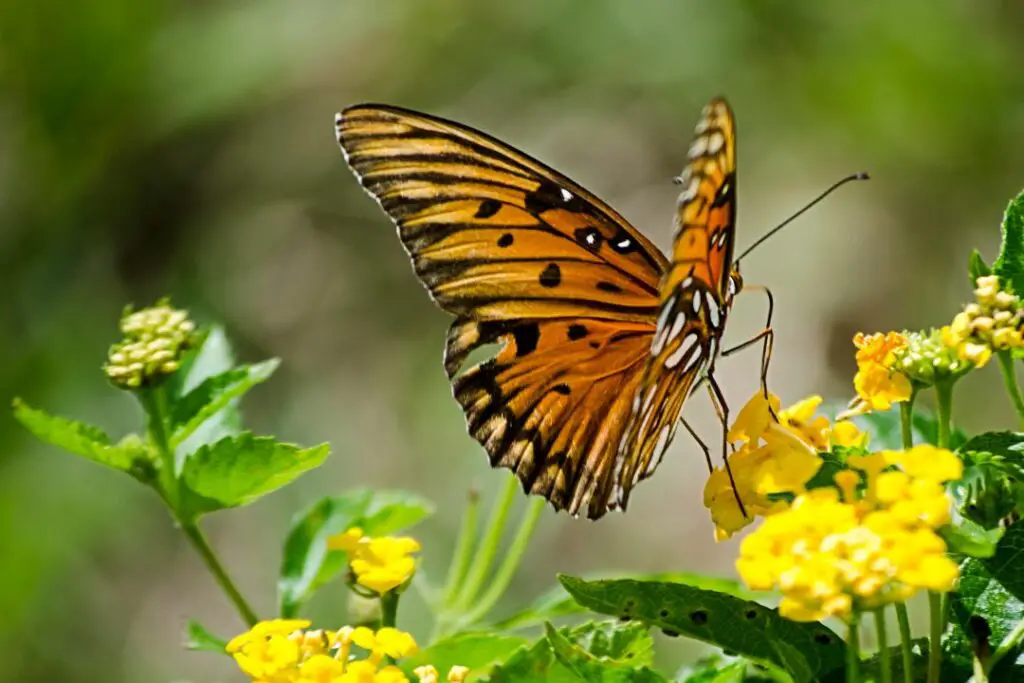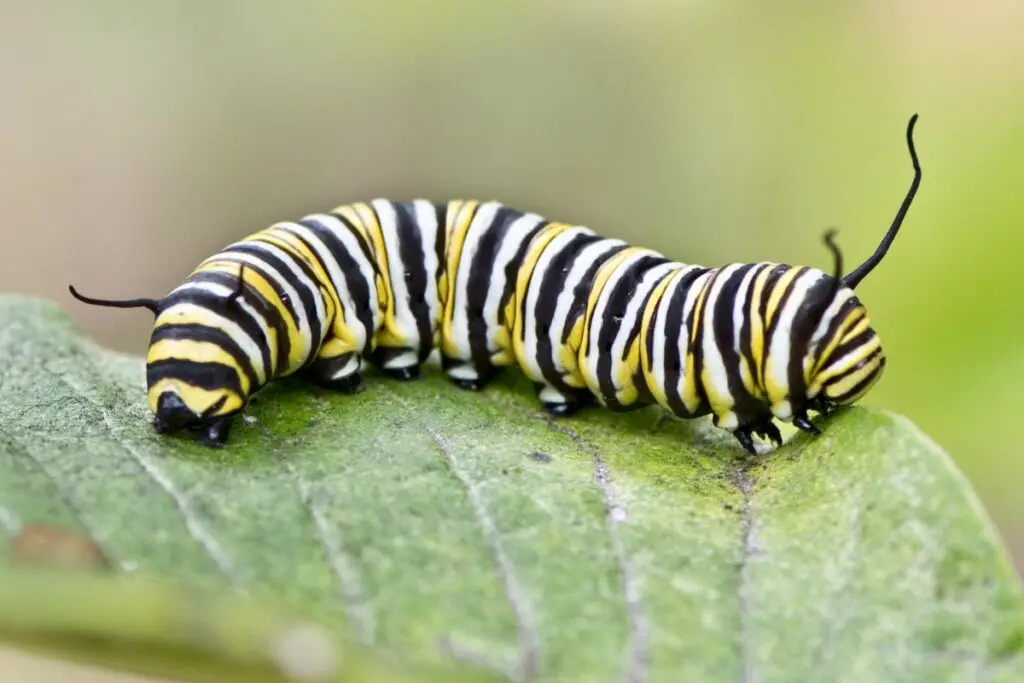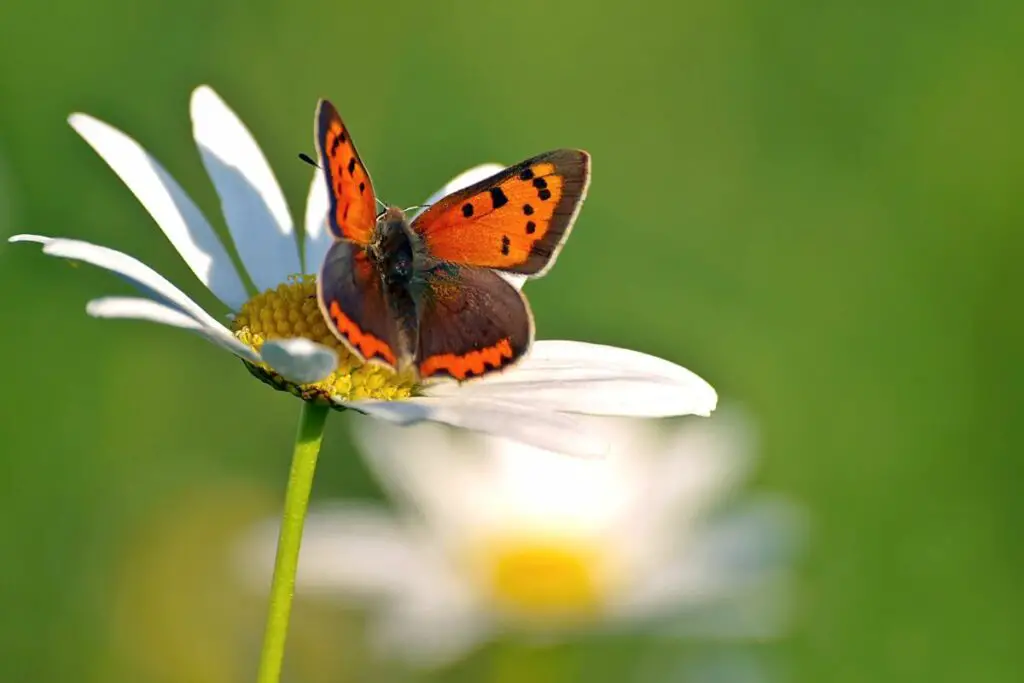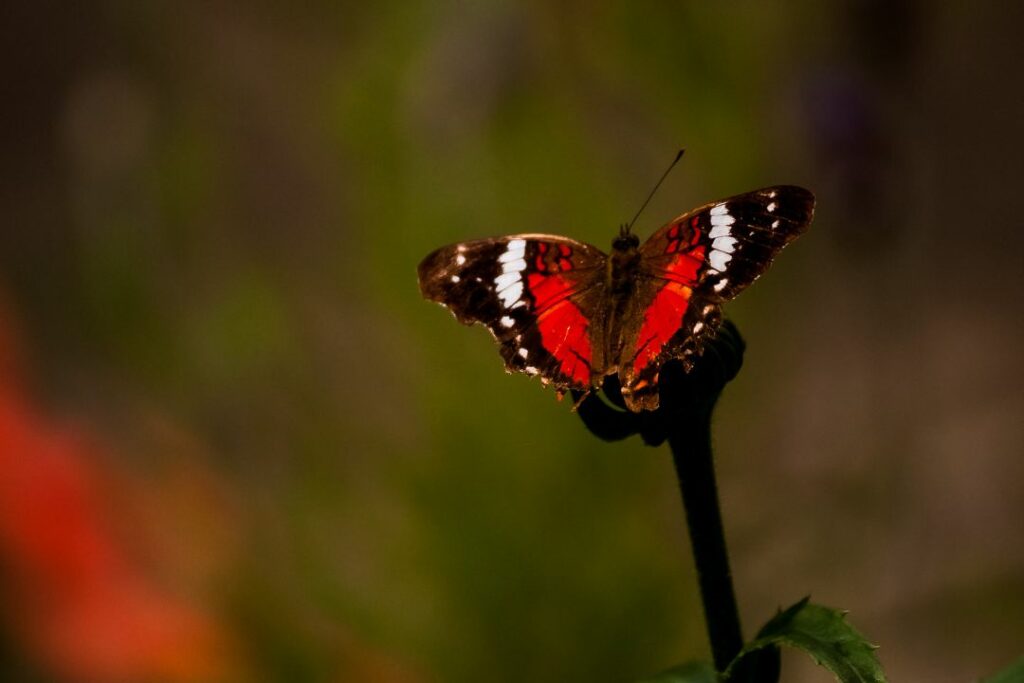I recently had the pleasure of watching a baby caterpillar wiggle its way along a nearby branch, and it got me thinking.
How do these strange little creatures turn into the beautiful butterflies we all know and love?
From the moment a butterfly lays its egg on a twig or a milkweed plant to when the adult butterfly emerges with colourful wings, the journey is nothing short of magical.
Let’s dive into the captivating world of the butterfly life cycle, where every stage is a fascinating testament to nature’s artistry.
A Butterfly Egg – Where It All Starts
Female butterflies are picky when it comes to laying their eggs. They search far and wide for the perfect plant. Why?
Because baby caterpillars are born with a ferocious appetite, and when they hatch, they need the right food to grow and thrive.
Different species of butterflies prefer specific host plants that cater to their dietary needs and give them all the nutrients they need to turn into a butterfly.
The caterpillar’s first meal will be the leaf they were born on, and the next stage of their life means they will spend nearly all their time eating.
The Larval Stage – A Very Hungry Caterpillar
Picture a tiny eating machine, constantly moving, munching away at leaves. That’s our caterpillar during the larval stage.
The primary goal? Eat, grow, repeat. At this stage, the caterpillar’s appetite is insatiable. It’s not being greedy; it’s just trying to digest as much food as possible for the incredible transformation ahead.
Every bite matters. The food consumed provides the essential building blocks for its metamorphosis into a butterfly. As the caterpillar grows, it will shed its skin multiple times, a process known as moulting.
But it’s not all about eating. The caterpillar also learns to navigate its environment, avoid predators, and adapt to changing conditions. It’s a time of rapid growth, both in size and experience, setting the stage for the next miraculous phase of its life cycle.
*Interesting fact – During this period, a caterpillar can increase its body weight by over 100 times!
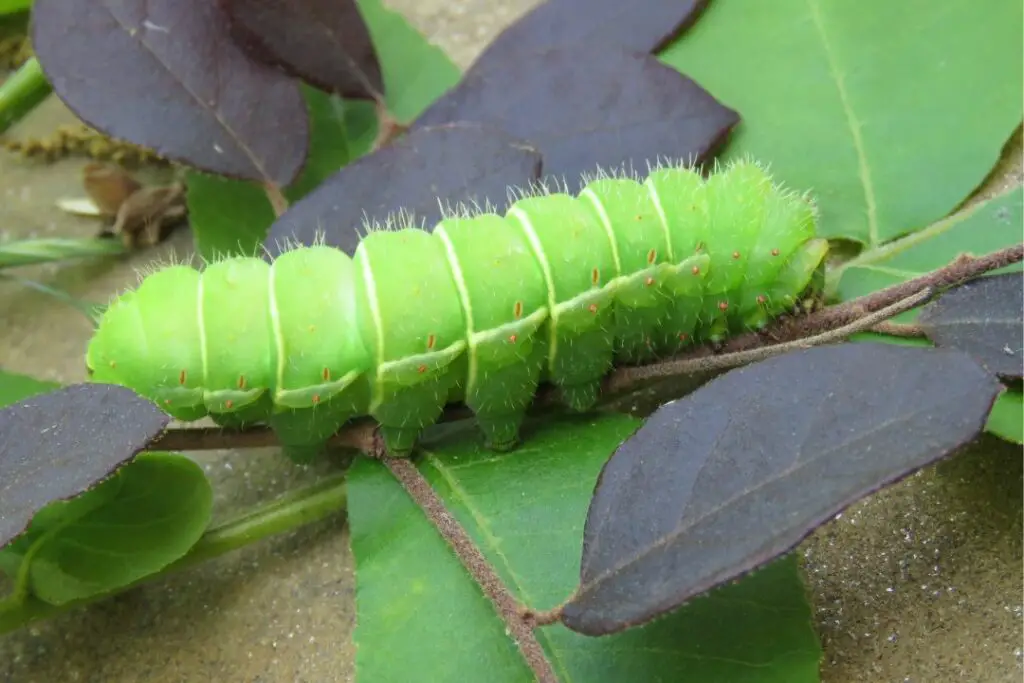
The Pupal Stage – Preparing For Change
After relentless eating and growing days, the caterpillar is ready for a dramatic shift. This next phase is called the pupal stage, where real magic happens.
The caterpillar finds a secure spot, often on a twig or leaf, and begins its transformation by forming a protective shell around itself, known as a chrysalis or pupa.
It might seem like everything is still inside this chrysalis, but don’t be fooled. A whirlwind of change is taking place. The caterpillar’s old body parts undergo a process of restructuring.
It’s like nature’s version of a makeover! The caterpillar is breaking down and reshaping itself, preparing to emerge as a completely different creature: a butterfly.
Inside the Chrysalis – A Transformation Unfolds
The chrysalis might appear as a simple, static shell from the outside, but one of nature’s most astounding transformations is underway within its walls. This isn’t just a caterpillar getting a new set of wings; it’s an entirely new body.
The caterpillar’s body starts to dissolve, breaking down most of its tissues. From this seemingly chaotic process, specialized groups of cells, known as imaginal discs, begin their work.
These discs were present even when the caterpillar was just a feeding machine, lying dormant and waiting for this moment. Each disc will form a different part of the adult butterfly, from its delicate wings to compound eyes.
The nutrients and energy the caterpillar stored during its voracious feeding in the larval stage now fuel this transformation. As days pass, the once recognizable caterpillar shape morphs, reshapes, and refines into the silhouette of a butterfly.
Towards the end, the skin of the chrysalis starts to become transparent, offering a sneak peek of the colours and patterns of the butterfly within. It’s a signal that the metamorphosis is nearly complete, and soon, a new life will emerge, ready to take flight.
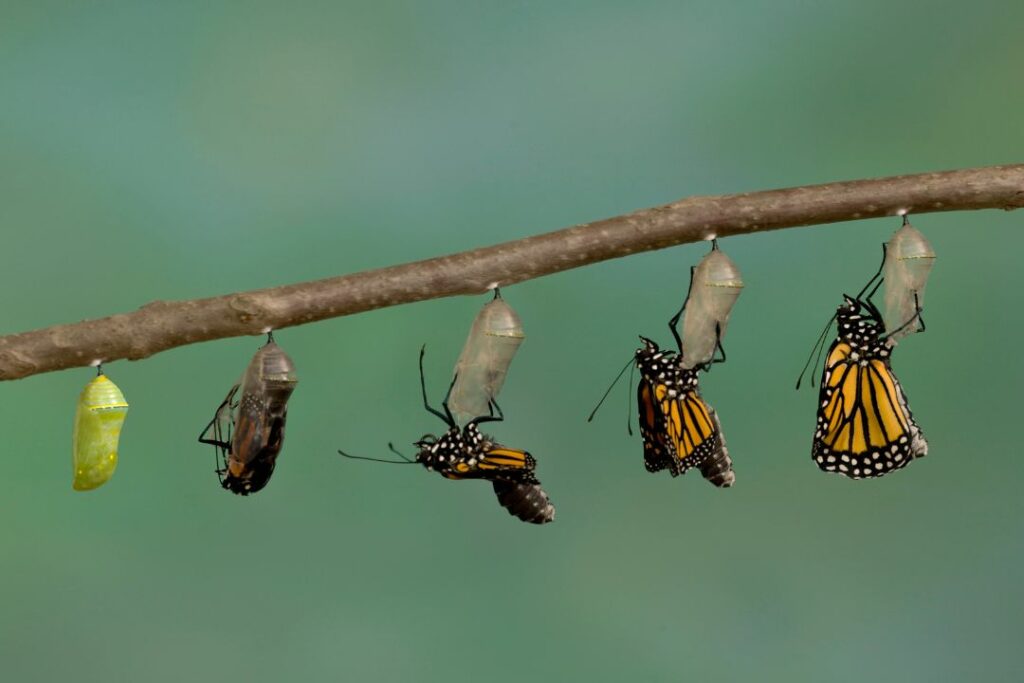
Emergence – The Birth of a Butterfly
The moment has finally arrived. Something extraordinary happens as sunlight filters through the trees and warms the chrysalis. The once rigid chrysalis starts to quiver and split, revealing a hint of colour.
Slowly but surely, a fully formed butterfly emerges, marking the end of its time in seclusion and the beginning of its life in the open.
This emergence, known as eclosion, is a delicate process. The butterfly’s wings are initially soft and folded against its body. It’s a vulnerable state, and the butterfly must be cautious.
It hangs upside down, allowing gravity to stretch out its wings. As time passes, it pumps a fluid called hemolymph into the wing veins, helping them expand and stiffen.
Once its wings are dry and robust, the butterfly tests them, fluttering gently, then taking its inaugural flight.
The Adult Butterfly – A Life on the Wing
Stepping into the world as a fully-fledged butterfly contrasts its earlier days as a crawling caterpillar. Now, with wings that paint the sky with vibrant hues, the butterfly embarks on a new set of adventures and challenges.
The primary mission of an adult butterfly is twofold: to feed and to reproduce. Unlike the caterpillar, which primarily consumes leaves, the butterfly seeks out nectar from flowers.
Using its long, straw-like proboscis, it sips this sweet liquid, gaining the energy it needs for flight and daily activities. Butterflies also play a crucial role in pollination. As they flit from flower to flower in search of nectar, they inadvertently transfer pollen, aiding in the reproduction of many plant species.
This symbiotic relationship benefits both the plants and the butterfly, ensuring a continuous supply of nectar.
Adult butterflies live short lives, but every flutter, every sip of nectar, and every mating dance celebrate life and the continuation of the species.
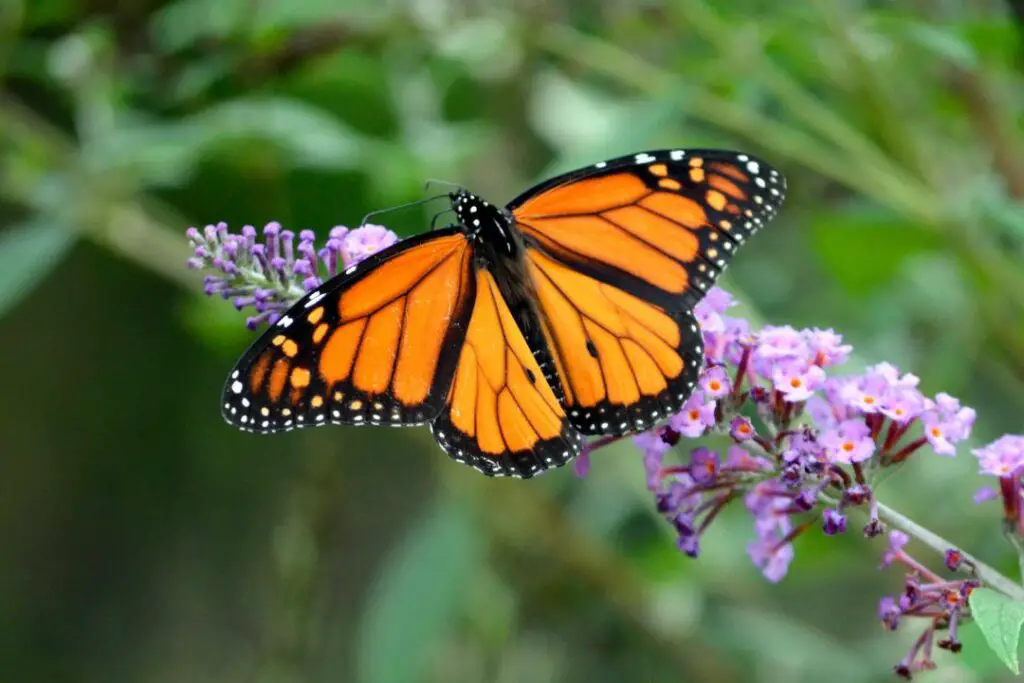
Reproduction – Ensuring the Next Generation
The circle of life is a continuous dance, and reproduction is the pivotal moment for butterflies to ensure the rhythm continues. After the intricate courtship displays and the act of mating, the female butterfly carries the next generation within her.
Butterfly mating is a delicate ballet combining visual cues, pheromones, and aerial displays. The process begins with the male butterfly identifying a potential mate.
He does this by recognizing specific visual patterns and sensing the unique pheromones released by the female. These chemical signals are like nature’s perfume, indicating her readiness to mate.
Once a male is drawn to a female, he may engage in a courtship dance. This involves a series of fluttering, circling, and even some gentle nudging. It’s his way of saying, “Choose me!”
The female, in turn, can accept or reject his advances based on his performance. Upon mutual agreement, the two butterflies will land and connect their abdomens, allowing the transfer of sperm from the male to the female. Depending on the species, this coupling can last minutes to hours.
In Conclusion
Who knew the tiny caterpillar I saw marching along a tree would go through so much change to become the butterflies we all know and love?
This metamorphosis process is a testament to how amazing these insects are and how we should do everything possible to ensure their survival.
Don’t miss our other great reads below, packed with more fascinating insights into the beautiful world of butterflies and other pollinators.

